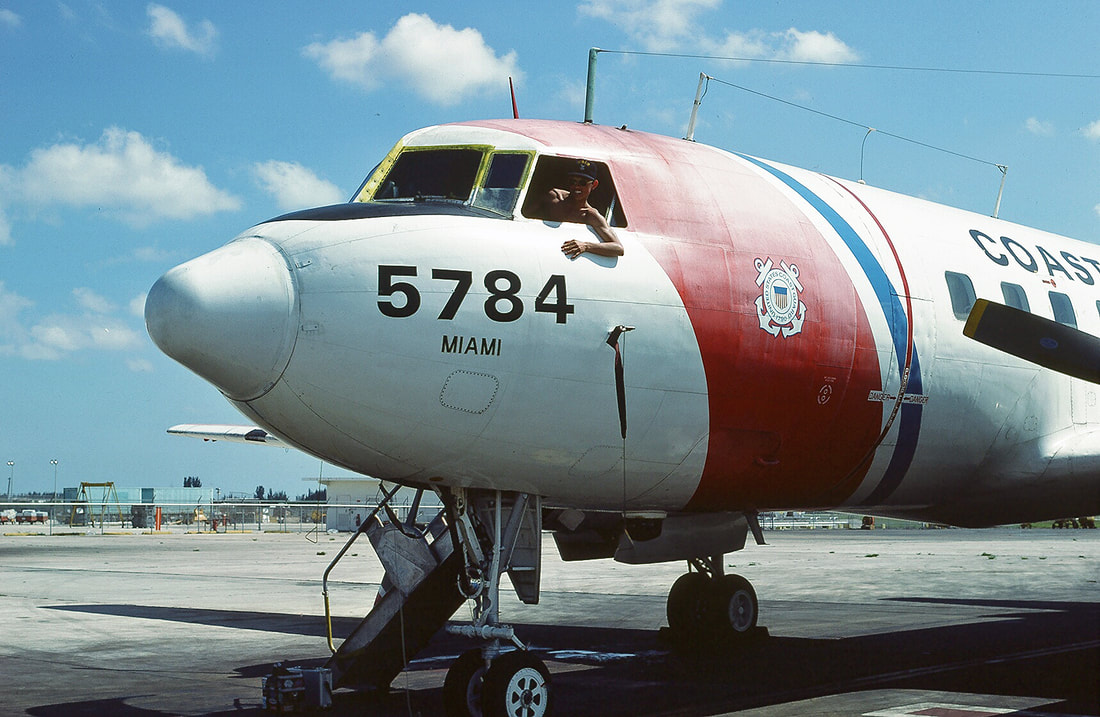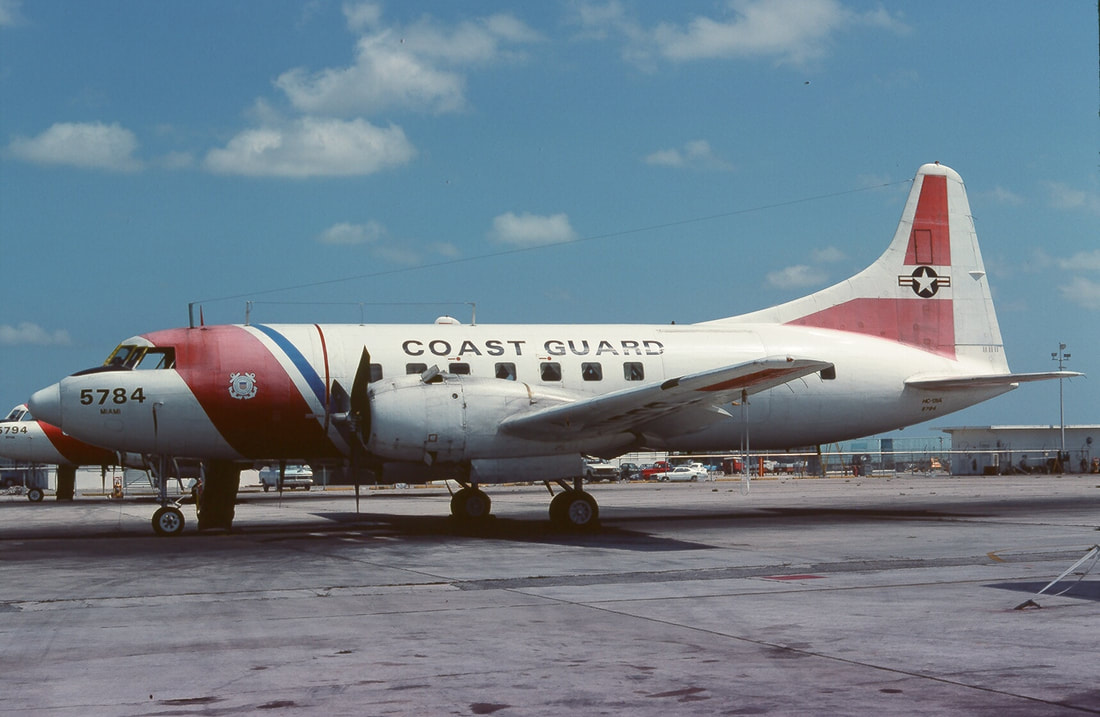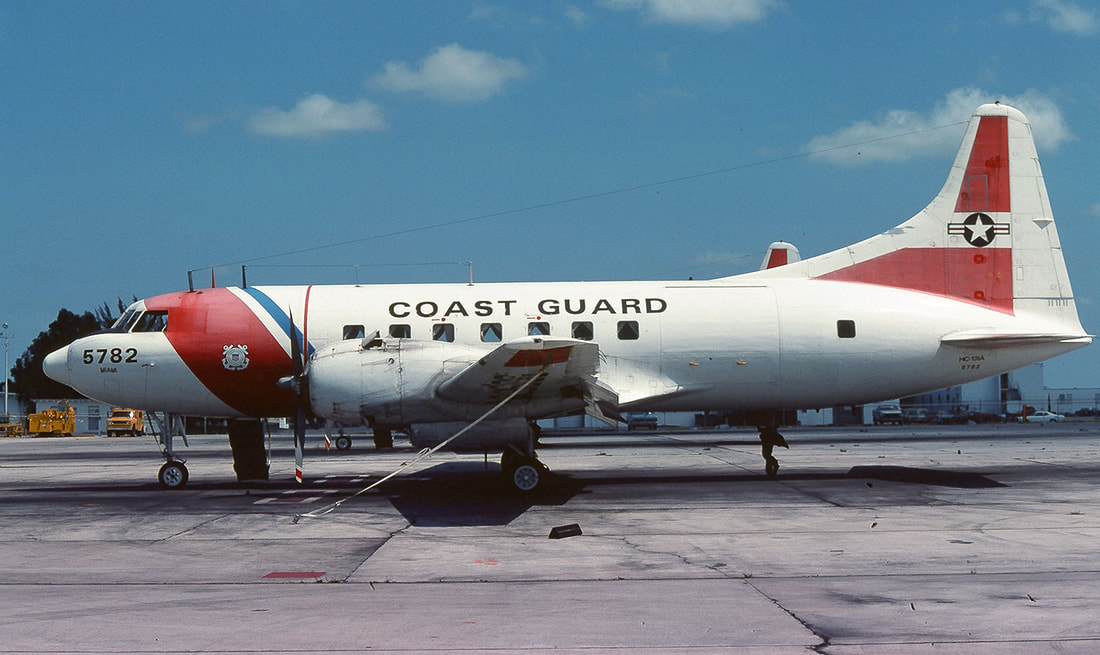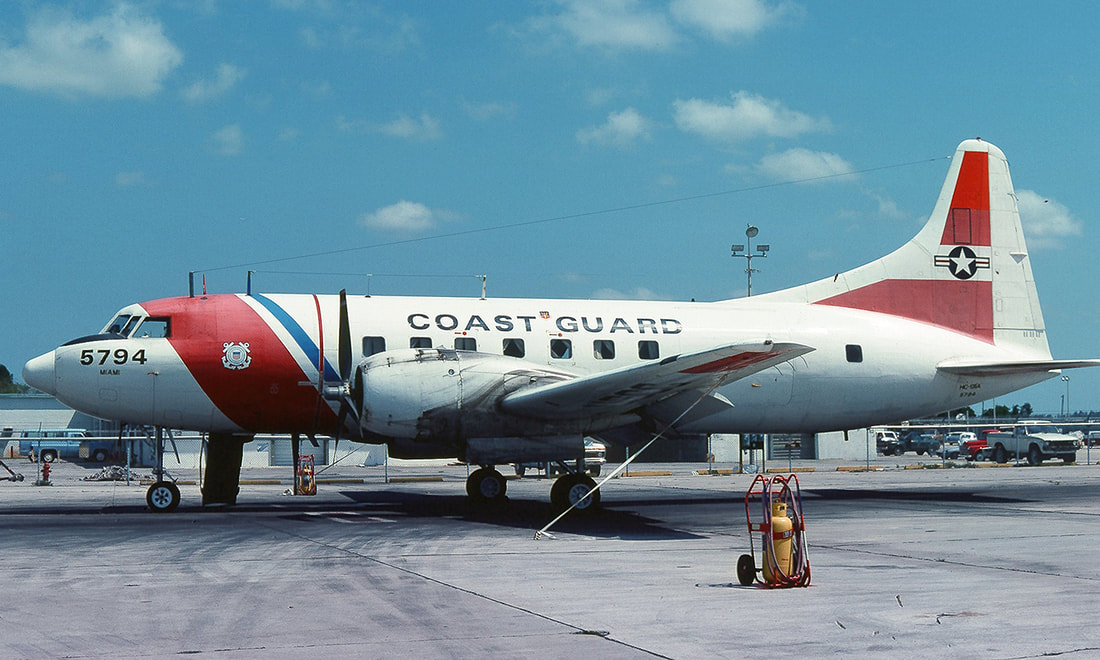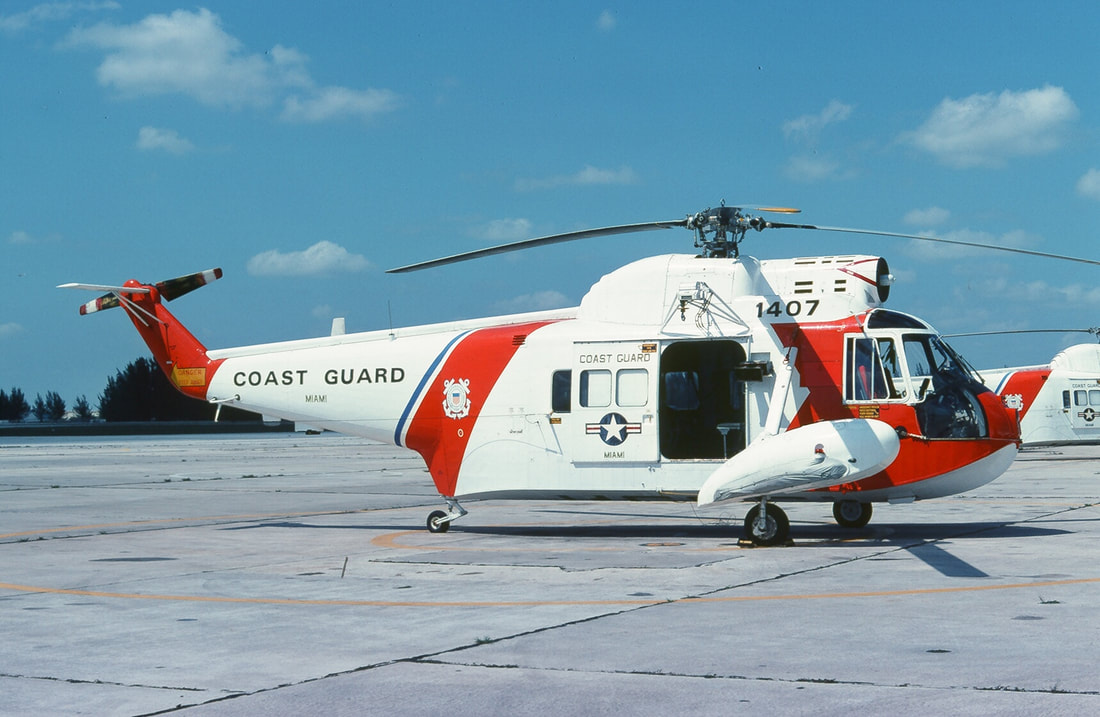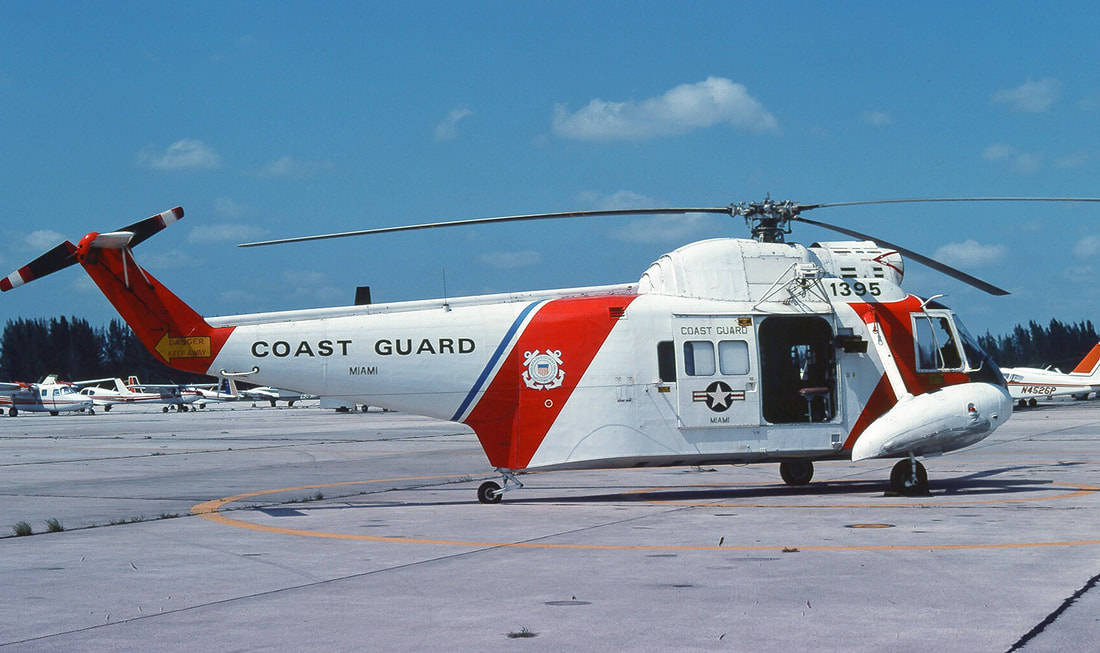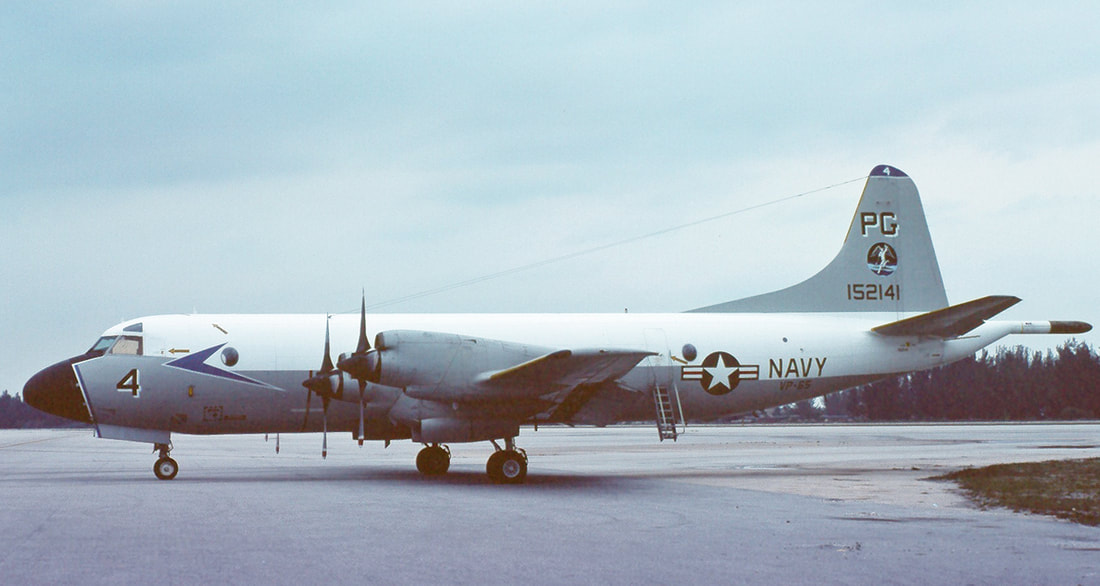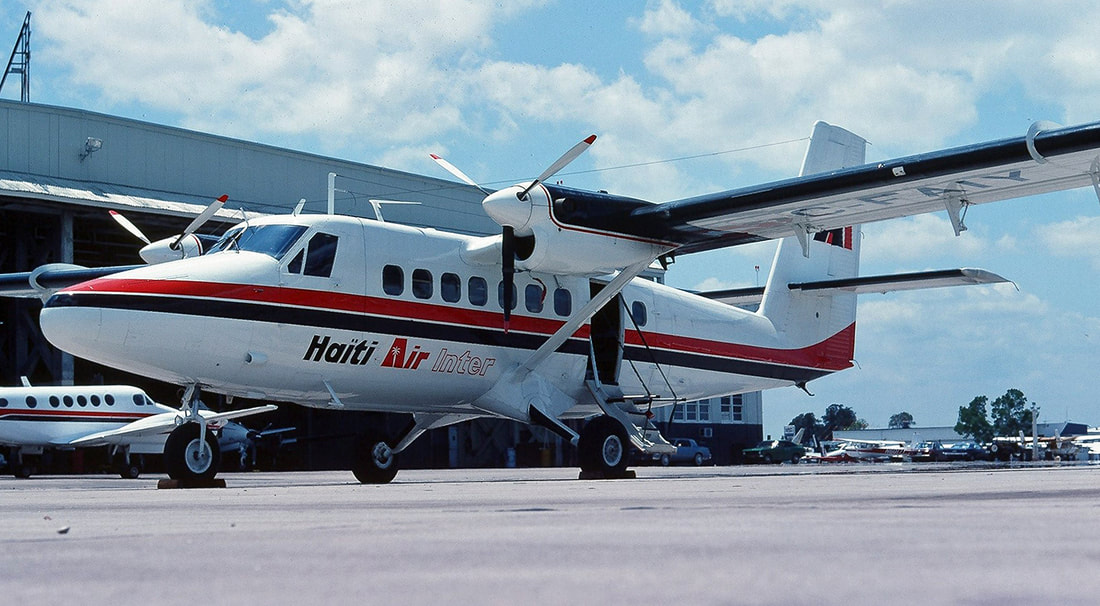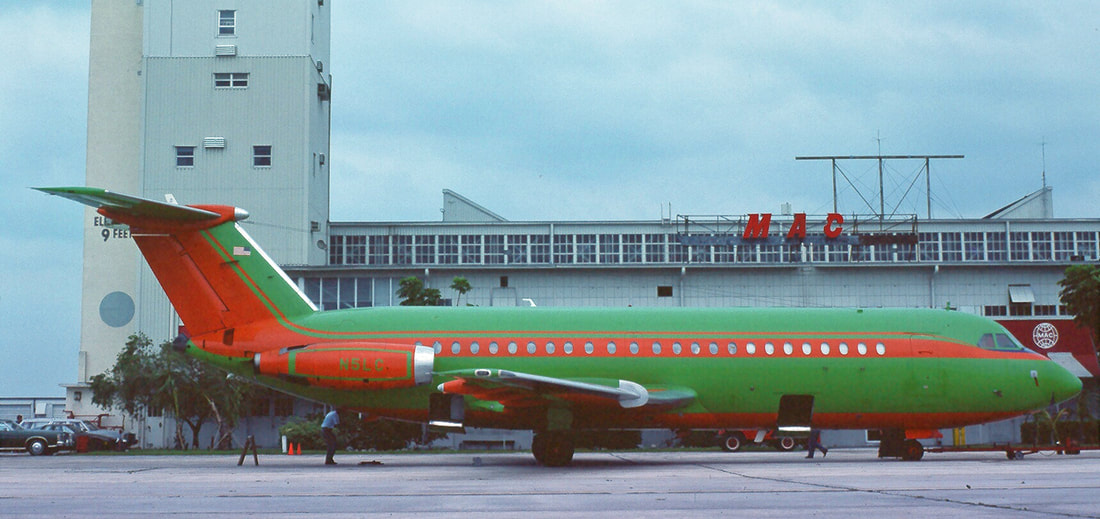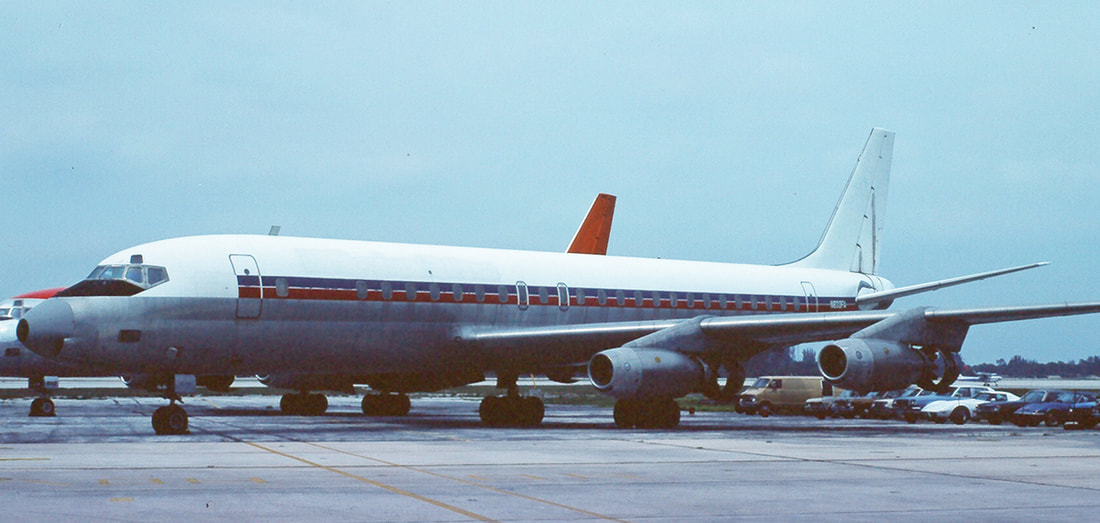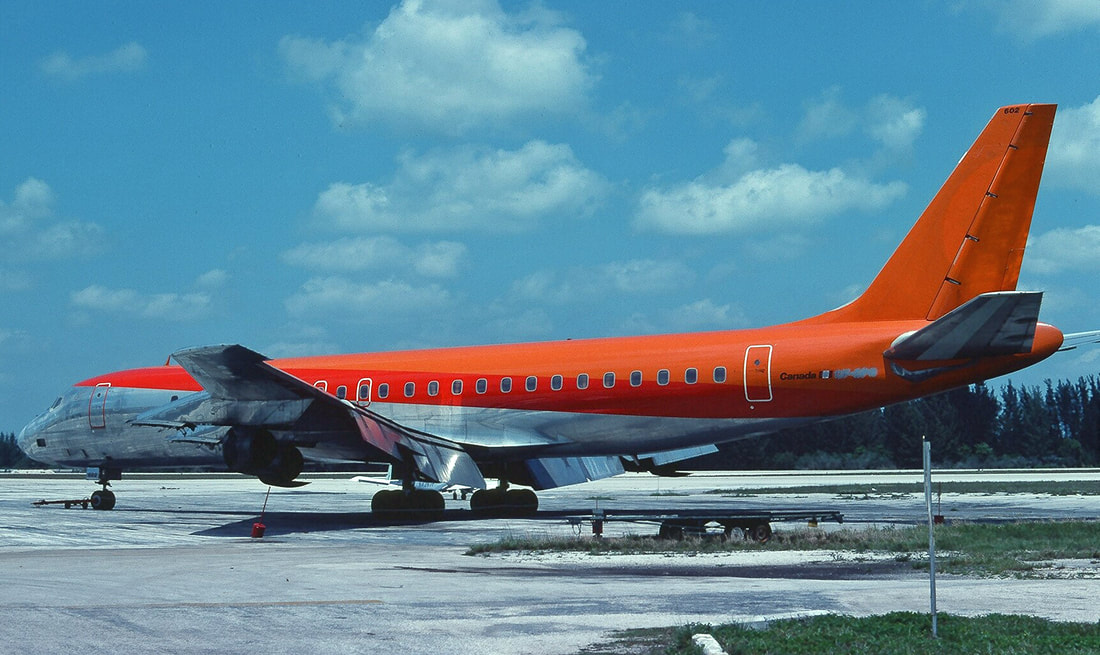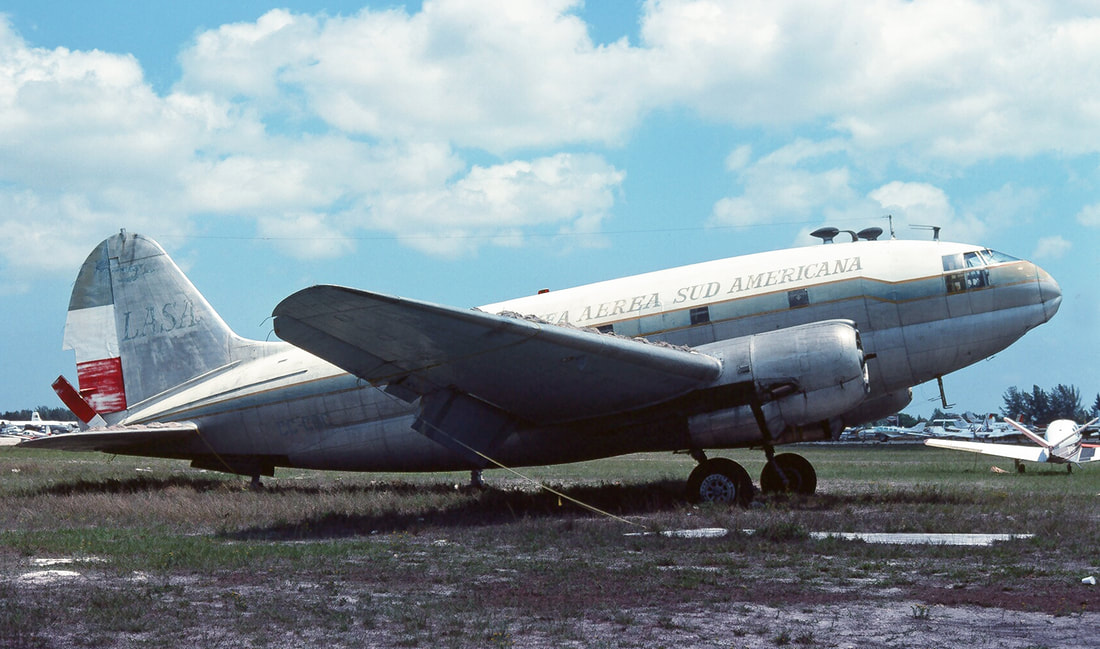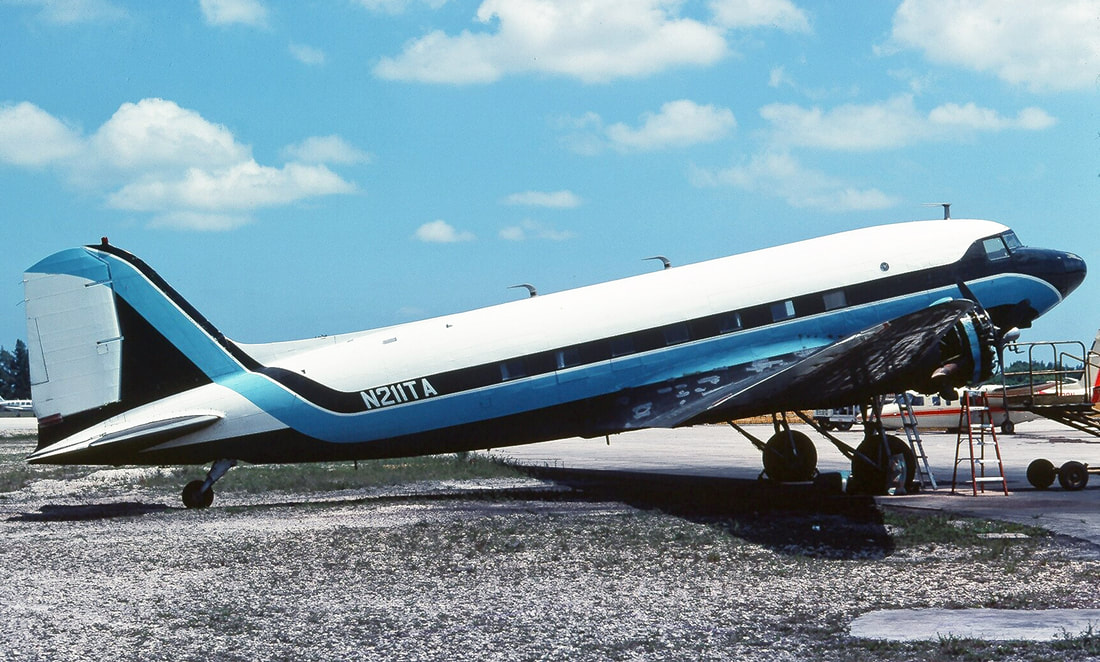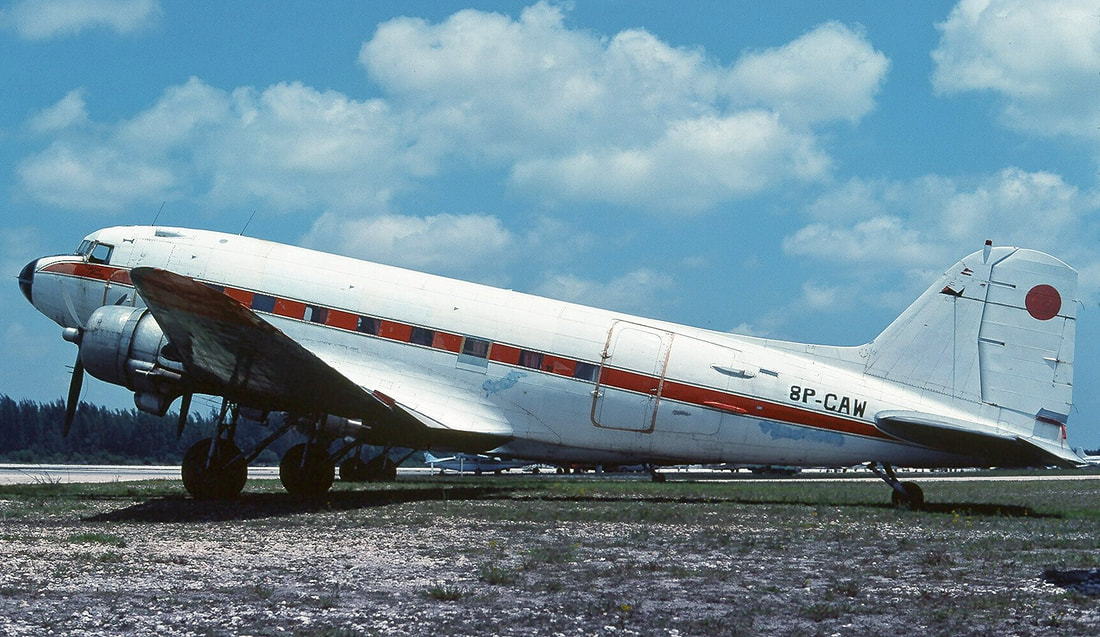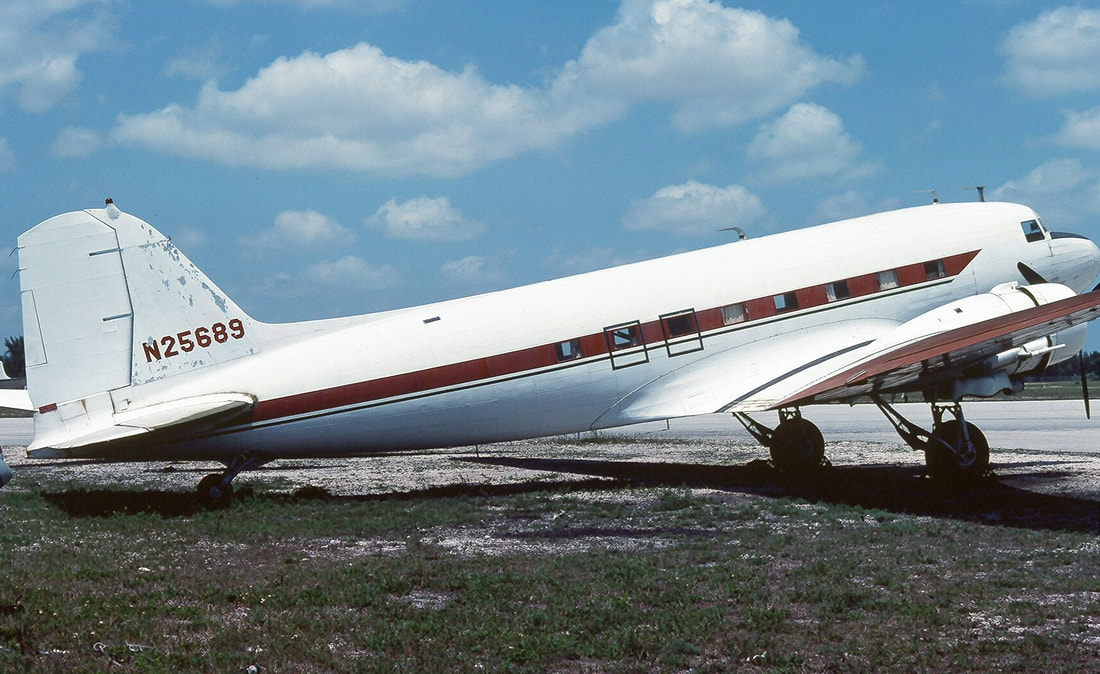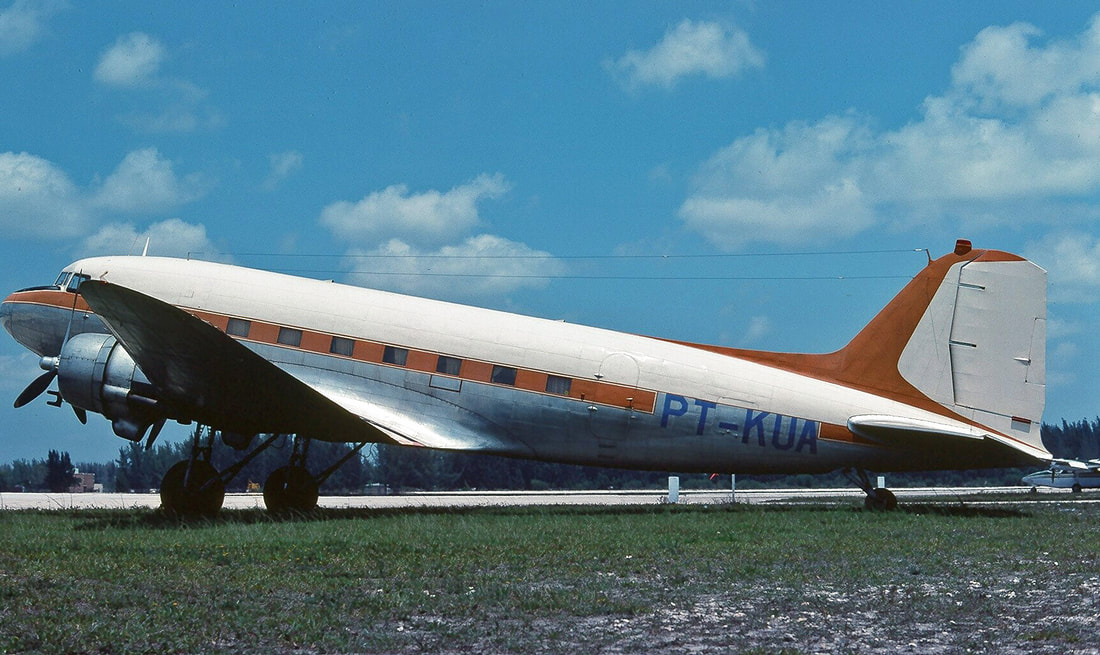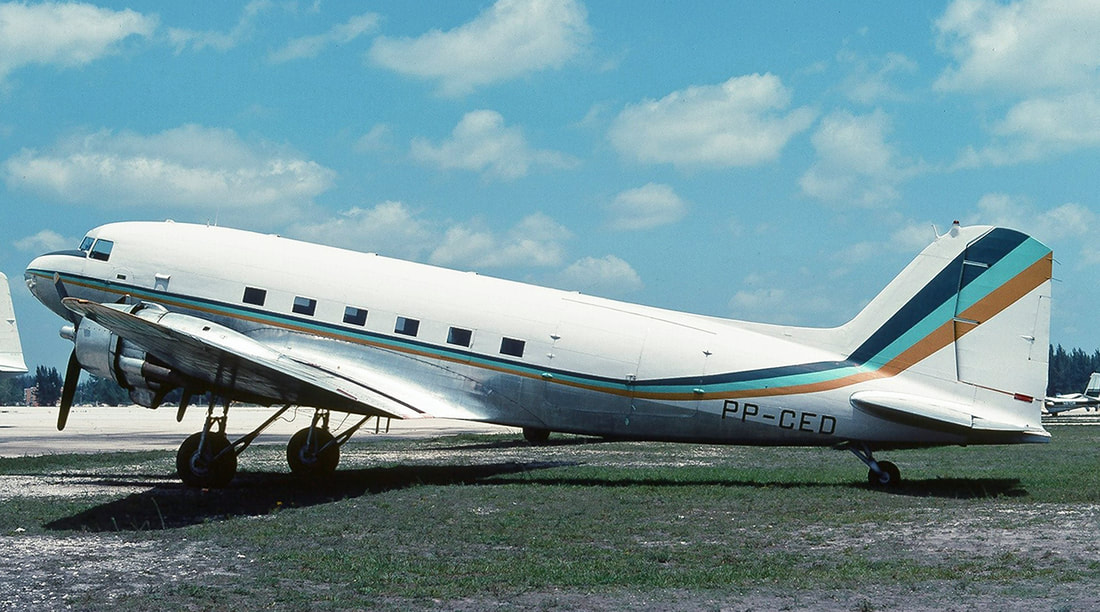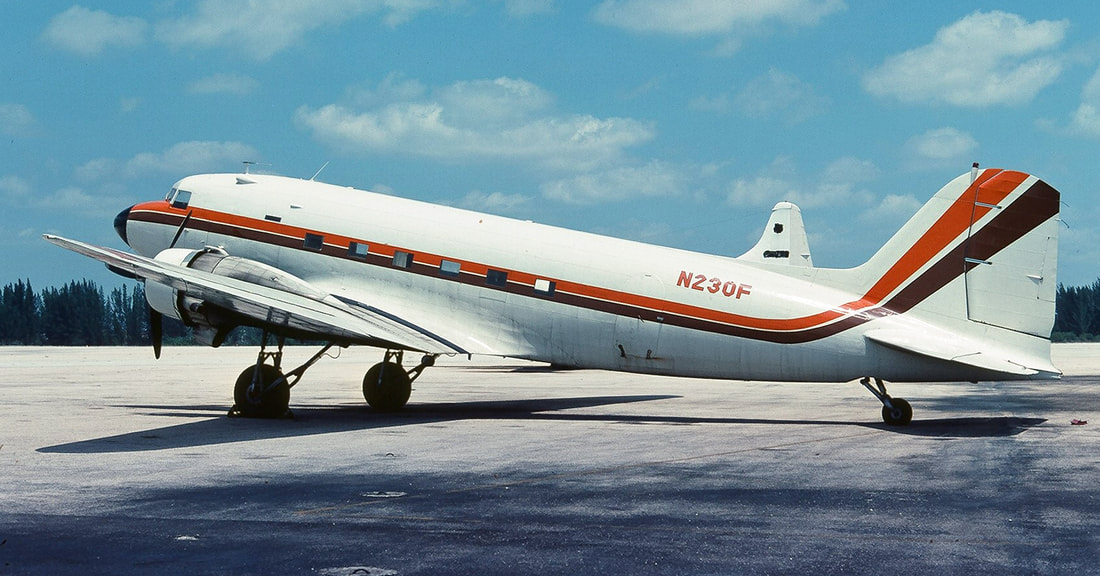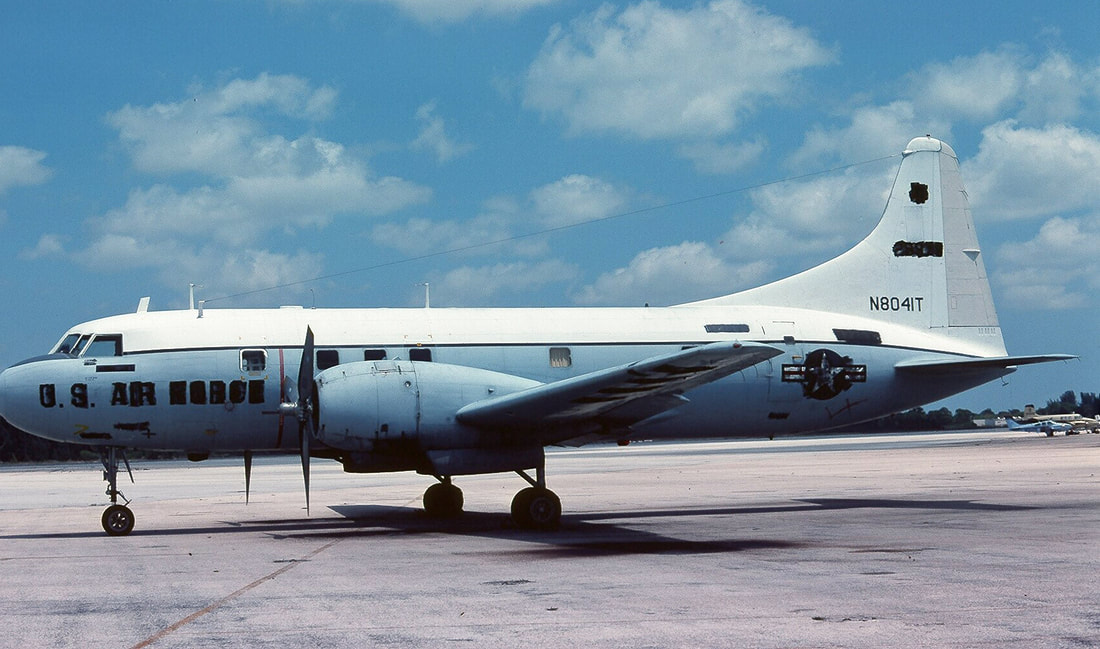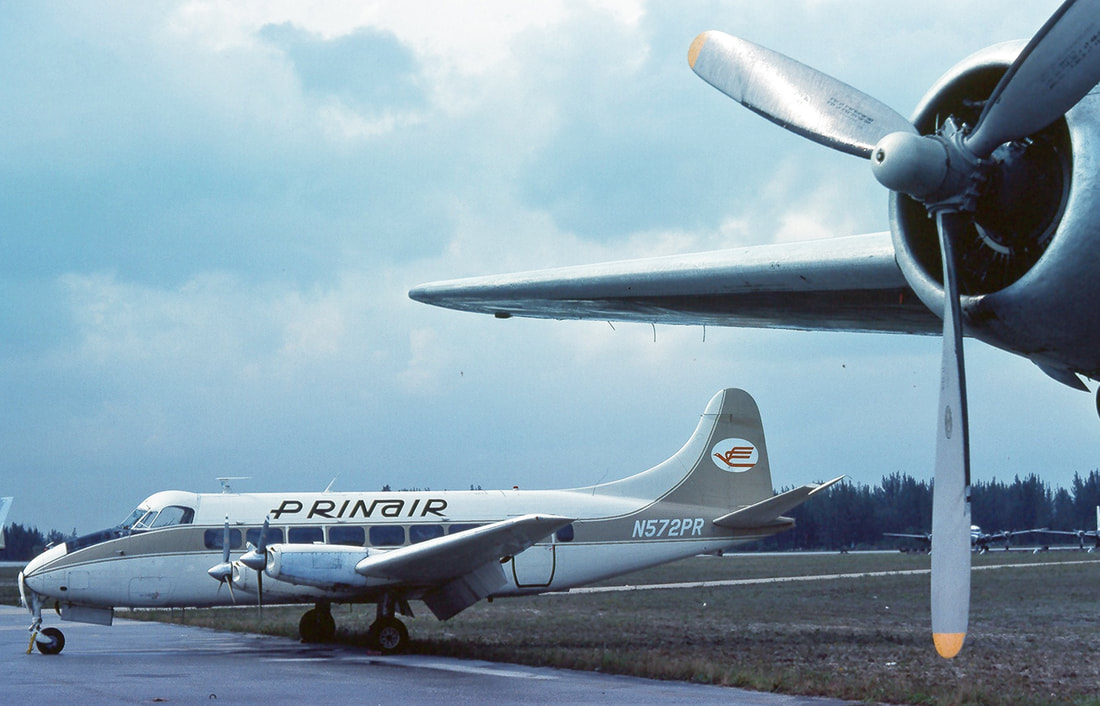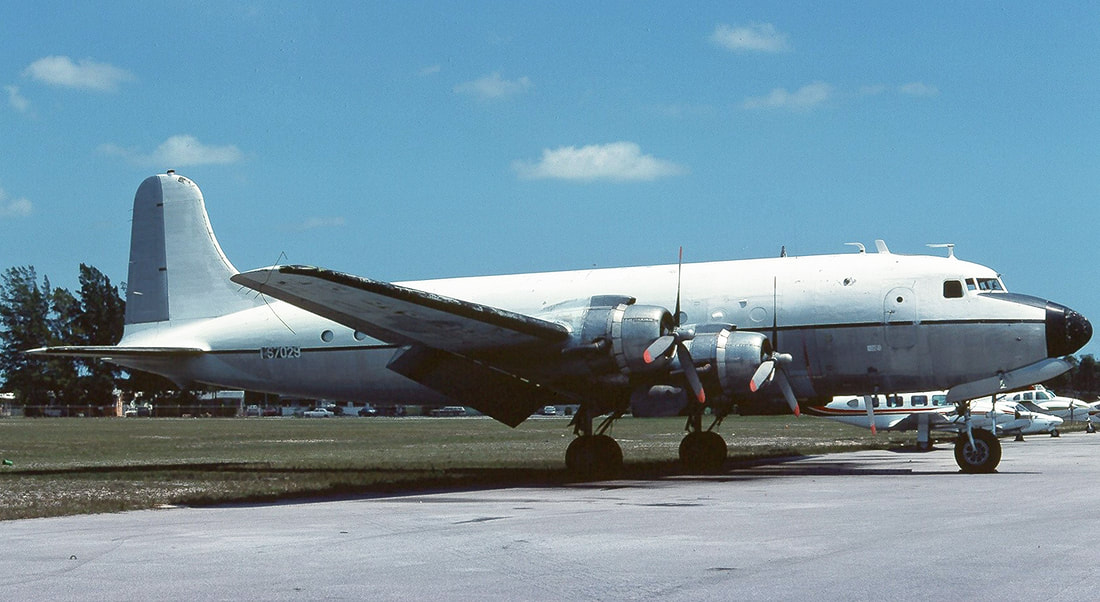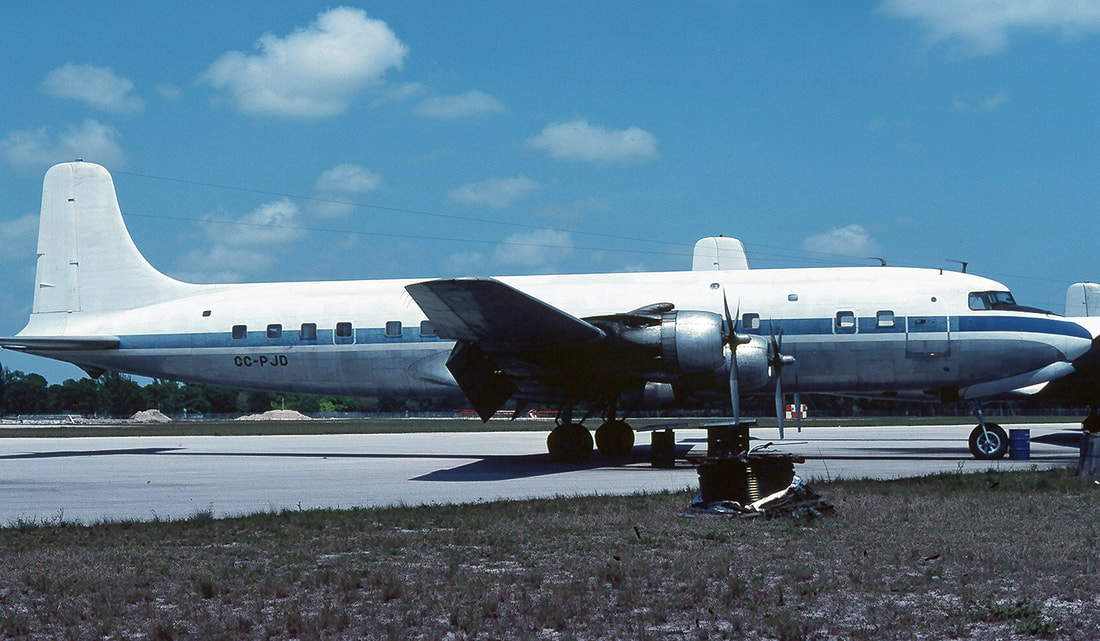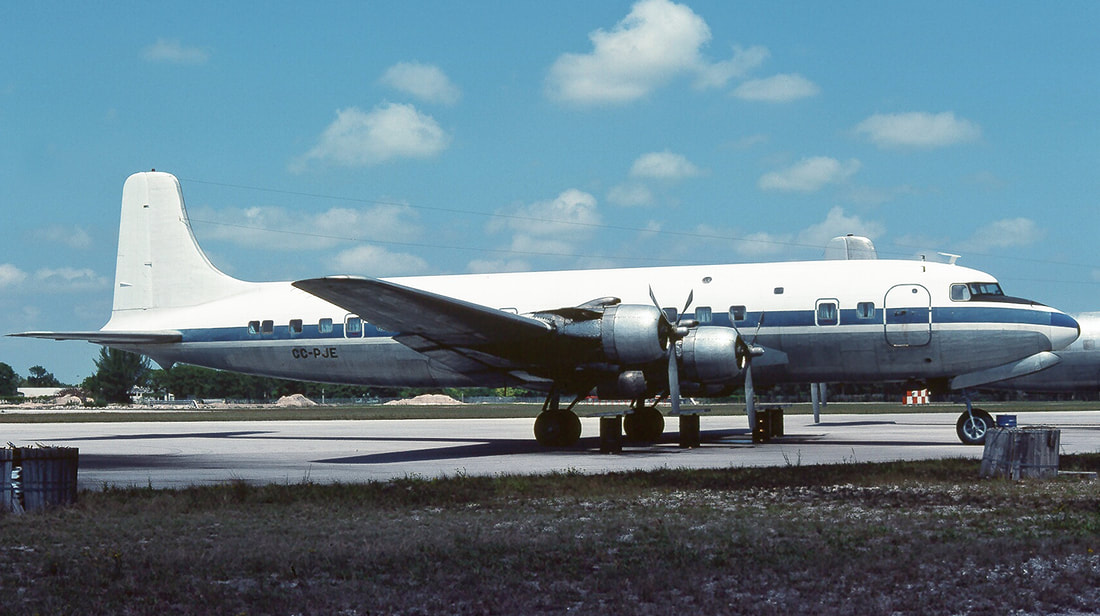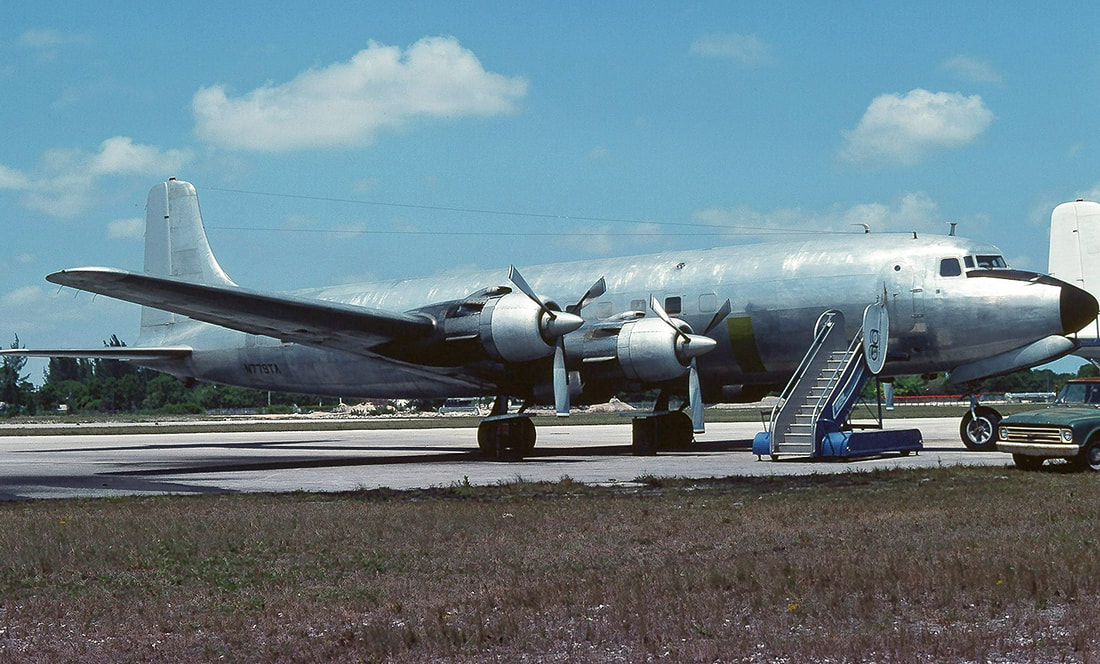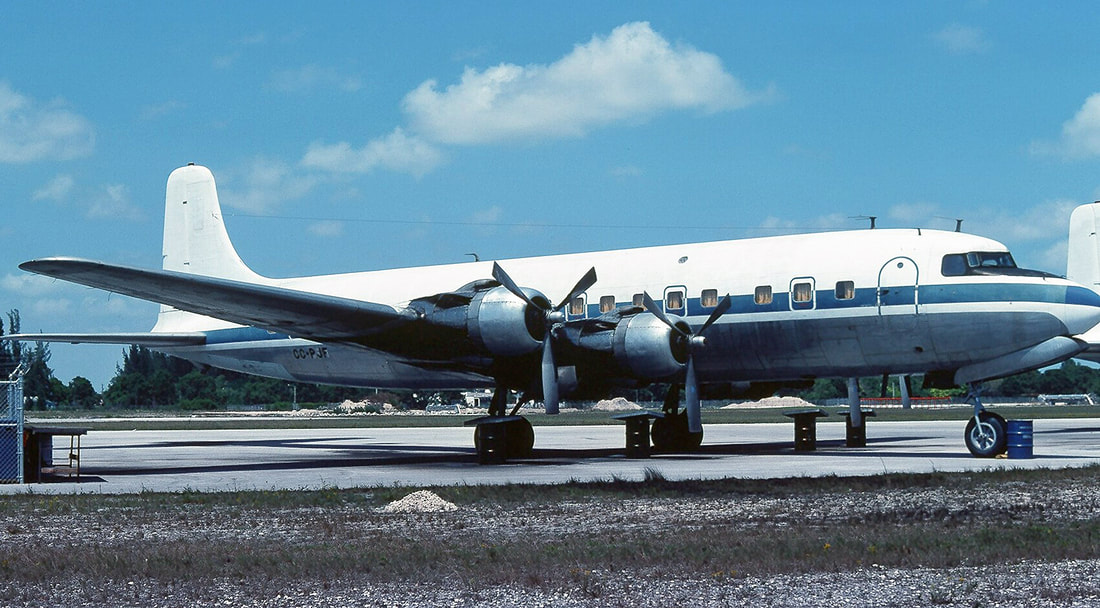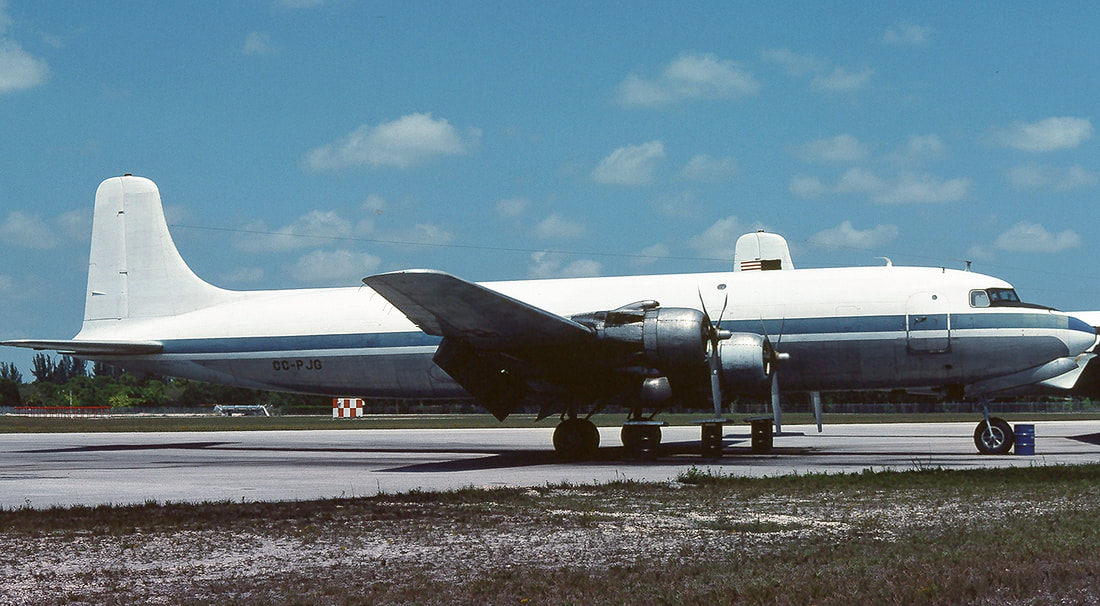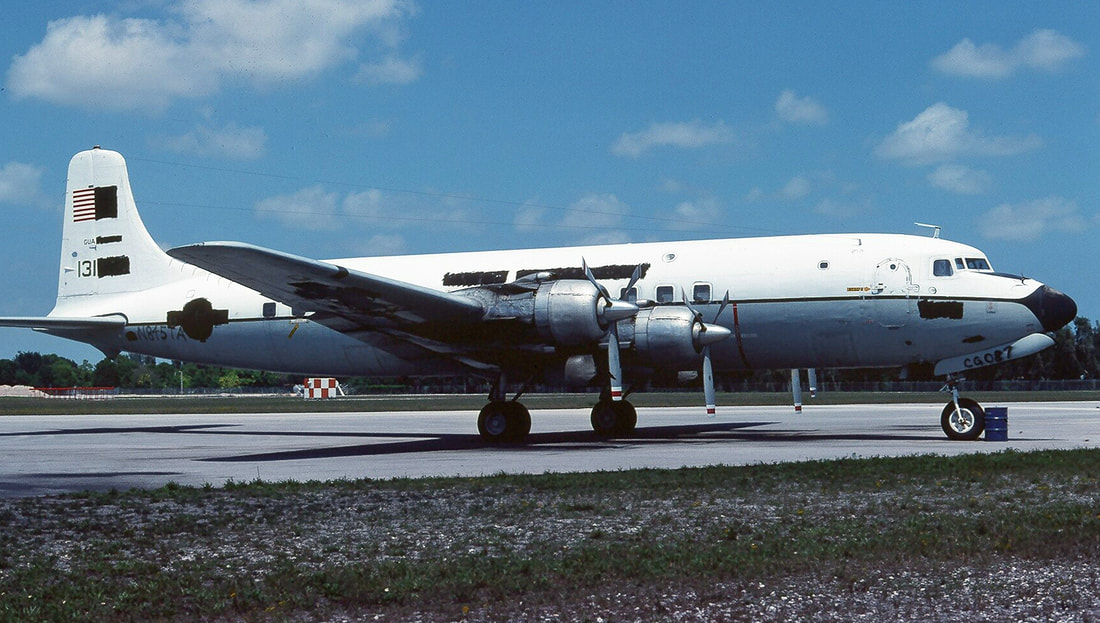In April 1980, several aviation friends and I visited some parts of the USA, on a month long aviation tour. We had bought a National Airlines pass and went from Amsterdam, via London-Heathrow, on National Airlines DC-10-30, N83NA, to Miami. After spending two weeks in the Miami area, we vistited San Juan, P.R., Saint-Thomas in the Virgen Islands, the Los Angeles area and Houston International airport.
Below, I focus on our visit to Opa-Locka Airfield.
First Natives called Opa-Locka; - Opa-tisha-wocka-locka = A big island covered with many trees and swamps.
Below, I focus on our visit to Opa-Locka Airfield.
First Natives called Opa-Locka; - Opa-tisha-wocka-locka = A big island covered with many trees and swamps.
Your author in the cockpit of 5784.
HC-131A, 5784, on a broiling, hot Opa-Locka tarmac in April 1980.
This Samaritan rolled-off the San Diego production-line as a C-131A for the USAF in the early 50’s. In April 1976 she was stored at a Military Aircraft Storage and Disposition Center. A year later she found a new employer. The United States Coast Guard started using her for space shuttle egress training. Presently she is preserved at California City Municipal Airport, CA. since June 1998.
5782 looked rather lackluster back in April 1980.
5782 was built for the USAF in 1954. She is listed as broken-up at Elizabeth City, NC. after 1982.
A very scruffy and weathered HC-131A. Mind; - the sooty, oil streaked engine cowls.
5794 is preserved at the Fred E. Weisbord Aircraft Museum in Pueblo, Colorado.
Pristine US Coast Guard HH-52A, 1407, on a sweltering Opa-Locka tarmac in April 1980.
During 1987 '1407' was stationed at the Los Angelos Coast Guard.
‘1395’ is ready for action.
This HH-52A SeaGuard is preserved at the Estrella Warbirds Museum, Paso Robles, CA.
Here, US Navy P3A Orion, 152141, is caught between flights on a overcast but sticky day at Opa-Locka.
This airframe left the factory at Burbank in 1965 and was delivered to the US Navy. In 1991 she was stored at AMARC and regenerated for transfer to the Chilean Navy in August 1994. Since September 2014 she is stored at Vina del Mar, Argentina.
C-FAIY looking magnificent in the Florida sun.
This airframe left the factory at Downsview, ON in December 1968 for delivery to SunAire in Los Angelos. On April 5, 1999, the pilot of N838MA reported that prior to takeoff from Palm Beach County park-Lantana Airport, FL, he completed a preflight inspection of the airplane that included checking the engine oil quantity. The line personnel topped off the oil reservoirs, and reportedly secured the engine oil reservoir filler caps. Approximately two minutes into the flight, the right engine oil pressure warning light illuminated. The pilot informed Palm Beach Approach Control of the engine oil pressure problem, shut down the right engine, and returned to Lantana. As the flight approached runway 03, the pilot heard a radio transmission from another airplane taxiing for takeoff. As the pilot continued the approach, with full flaps extended, he elected to go-around 1500 feet from the approach end of the 3000-foot runway. The airplane collided with the ground during the go-around maneuver to runway 15. The wreckage examination also disclosed that the right cowling showed oil streaming back from behind the engine and onto the wing strut. Inspection of the oil filler cap revealed that it had not been properly installed.
BAC 1-11, N5LC, left the factory in Hurn for delivery to American Airlines in June 1966. During our visit to Opa-Locka, she was owned by James Lumber Co. She was scrapped in 2014 after long period of storage at Merced/Atwater Castle, CA.
This beat-up DC-8 has still her sleek Pratt & Whitney JT-3C turbojets under her wings.
During the 70’s this former KLM DC-8-33 (PH-DCC) was operated by Philippine Airlines and, as can be seen in this picture, still retains her PAL cheat-line. In March 1980 she was owned by Frederick B. Ayer & Associates Inc. (FB Ayer Inc.). She is listed scrapped at Opa Locka in June 1983.
This shiny former CPair DC-8, shows her barndoor flaps fully extended.
DC-8-43, CF-CPG, was delivered new to CPair in November 1961. In April 1980 she was owned by Concord International Airlines and was already chopped-up at Opa-Locka in May 1981.
Grass is growing under this old classic bird.
CC-CDC, rolled-off the Buffolo, NY. production-line in October 1944 for delivery to the USAAF in India. The C-46 was working for Lineas Aereas Sud Americana between 1963 and 1974. During our visit to Opa-Locka in April 1980 she was owned by Victor Salas. During 1984 she was made airworthy again and exported to Panama and later to Haiti. She is preserved at the Warner Robins AFB museum since 1991.
The starboard Wright R-1820-202A of this C-47 comes under scrutiny during a turnround check.
Tursair, N211TA, a DC-3A, was built in 1942. On January 21, 1982, an instructor of Tursair and a student were performing touch-and-goes at Opa-locka Airport, Florida when the student pilot suddenly applied power, causing a momentary power interruption of the no. 1 engine. Control was lost and the DC-3 ran off the runway and struck a tree. The aircraft was damaged beyond repair.
A Barbados registrated C-47B is seen here on a lazy, hot spring afternoon.
Former Tropical Air Service C-47B, 8P-CAW, rolled-out the Oklahoma plant during 1943 for delivery to the USAAF. After the war, this frame had operated with Transair, Jersey Airlines and British United (CI) Airways as G-AMZF. It then did time in Canada as with North Coast Airways and Eastern Provincial Airways. Became, 8P-CAW, with Tropical Air Services in December 1976. After my visit to Opa-Locka in April 1980 she was sold to Air Ranger in Winnipeg, Canada as C-GCUW. Unfortunately she was soon withdrawn from use due excessive corrosion problems.
Patched up, paint-faded fuselage, with antiquated oil-dripping engines and its obtuse way of resting on a tailwheel.
N25689 is a DC-3A and built in 1942. Shortly after my visit at Opa-Locka she was sold to General Services Inc. of Baco Raton, FL.
PT-KUA is seen here basking in the Florida sun.
During the 70’s, PT-KUA, worked for Rico Taxi Aereo from Brasil. She was involved in an incident on June 4, 1980. During the night the C-47 collided with trees during the landing rollout at Berrys Citrus Airport, Labelle, FL. Police found marijuana residue found in cabin. Most probably she had 'an outing' in the drug running circuit. In December 1981 the C-47B was sold to D & D parts in Miami as N90545.
PP-CED enjoying the sunshine at Opa-Locka.
PP-CED, was delivered to the USAAF 1942. After my visit she was sold to Rutaca Airways as YV-222C., where I spotted her in February 2001.
N230F gleaming in the sun today.
Burnside Ott Aviation Training Center C-47, N230F, started her flying career with the USAAF in 1942. After my visit to OPF, she was exported to Bolivia and registrated CP-1952. Last operator was Transportes Aereos San Miguel.
N8041T with her USAF markings crudely painted out.
N8041T was built in November 1954 as a T-29D, serving as a trainer and communications platform. She was stored at Davis Monthan in June 1975. On June 22, 1979., the Convair was impounded for drugs running by the sheriff of Highland County, FL. During our visit she was owned by Caribbean Aviation Services.
The vintage Douglas piston-engine forms a fitting frame for this Prinair DH-114 Heron, N572PR, at an overcast Opa-Locka, FL.
N60729 looks like your average drug-runner!
N67029 was manufactured for the USAAF May 1945. In May 1987, while owned by Great Southern Airways, she seized by the Charlotte County Sheriff for clandestine work. She is on display at Ellsworthe AFG museum, Rapid City, SD. since September 2013.
Getting of age, cargo they go.
CC-PJD, a DC-6B started flying with LAN Chile in August 1958. On April 11, 1980, she was bought by Atlas Aircraft Corp. and registrated N843TA. She is listed broken-up at Bogota in Transoceanica colors during November 2002.
CC-PJE caught by the camera on a sun-drenched day at Opa-Locka, FL.
CC-PJE, a DC-6B started flying with American Airlines in October 1951. In 1979, she was bought by Atlas Aircraft Corp. and registrated N842TA. She is listed broken-up during 1986.
N774TA; - The machine was a bare bones workhorse.
N779TA, a DC-6A/C started flying with Panair do Brasil in 1959. In 1978, she was bought by Atlas Aircraft Corp. From August 1989 she was working for Norhern Air Cargo, Alaska. She is listed stored in wingless condition at Fairbanks.
An eye catching DC-6B with 23 years’ service parked at Opa Locka in April 1980.
CC-PJF, a DC-6B started flying with Slick Airways in 1957. Between 1969 and 1979 she flew for Ladeco in Chile. Atlas Aircraft bought the DC-6 in 1979 and registrated her N840TA. She is listed broken-up at Santo Domingo in Aeromar colors during November 2002.
A picture of tranquility on the ramp at Opa-Locka.
CC-PJG, a DC-6B started flying with Canadian Pacific Air lines (CPair) in 1956. Between 1972 and 1979 she flew for Ladeco in Chile. Atlas Aircraft bought the DC-6 in 1979 and registrated her N841TA. She is listed partly preserved at the 1940 Air Terminal Museum in Houston, TX. since early 2004.
The livery shows signs of an hasty splash-n-dash, with her previous identification overpainted.
N845TA, a R6D-1 started flying with US Navy in 1952. During 1979 she was bought by Atlas Aircraft Corp. She is listed broken-up at Opa-Locka after 1990.
Splendid Atlas Aircraft family portrait.
- The End -
